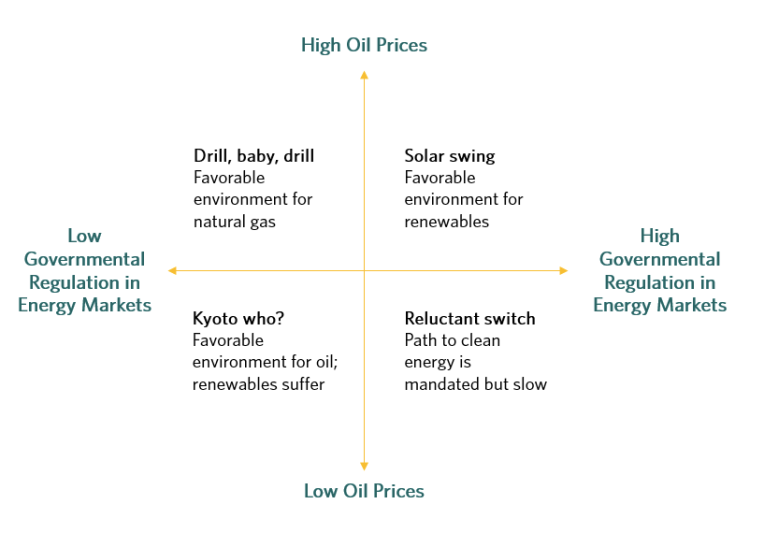Scenario Planning to Predict the Future of the Energy Sector
Objective. In three distinct projects, diverse clients (the U.S. Environmental Protection Agency, a large private construction firm, and an industry association) requested that my consulting team develop scenarios of future energy prices and regulatory environments to guide them in strategic planning.
Approach. Although each client wanted a different view of the energy industry, we structured our approach similarly for each project. We used a four-step scenario planning process:
- Define the focal question and driving macro forces
- Identify key axes of uncertainty
- Select scenario frameworks
- Create storyboards and scenario narratives
We began by clarifying each client's goals in using the scenarios. We reviewed energy projection models, collected background information, and interviewed experts about potential future trends in economics, society, demography, technological innovation, geopolitics, and U.S. politics.
We analyzed this data to identify key uncertainties and trends and discussed them during a workshop with energy sector experts. We helped participants edit, prioritize, and select the key uncertainties that they felt would have the greatest future impact.
Here's an example of what a rough scenario framework might look like:

Participants ultimately selected a small number of scenario frameworks for further development. During subsequent workshop breakout sessions, participants discussed the selected scenarios and their end states as well as the potential key events, headlines, factors, and outcomes. Following the workshop, the team refined the scenario storyboards developed during the workshop and drafted detailed scenarios.
The most fun part of this project was crafting the scenarios into readable narratives complete with fake news about oil spills, presidential election upsets, and even a few "black swan" events. We specifically designed the different futures to highlight the risks and opportunities involved in strategic energy issues.
Results. For the EPA, we developed four energy scenarios that hypothesize the global energy market in 2050, focusing on the potential impacts of increased biofuels usage. The scenarios became part of the EPA’s triennial assessment of the impact of biofuels.
For our other clients, the scenarios focused more on oil price concerns and potential regulation of their respective industries. We guided clients in the use of these scenarios in comprehensive strategic planning. For one client, we also developed a “deployment kit” to assist business units in using the scenarios to prepare for the future.